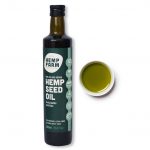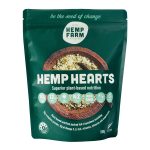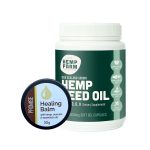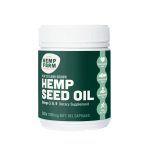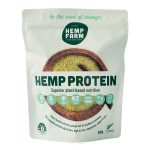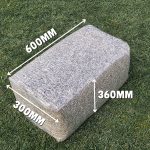
10 Reasons Hemp Is Good For The Planet
It’s no secret that we live in a time of global environmental crisis. Much of our land, air and water has been desecrated. Here in New Zealand for example, it’s a known fact that approximately two-thirds of rivers are now un-swimmable. Most people have an awareness of these ecological challenges and are hopeful for solutions. There are scientists, industries and individuals around the world working hard on projects to bring change. A key component to the solution is industrial hemp.
The earth has been flooded with an array of non-biodegradable resources such as plastic and chemicals and this is just one of the areas where hemp provides an answer.
21st Century Hemp
For those in the know industrial hemp is one of our strongest tools in terms of remediating many of the problems the environment faces today. Hemp is a rapidly growing renewable resource that can help regenerate depleted soils, sequester carbons out of the atmosphere and support the re-establishment of harmony between humans and the planet again. The 21st-century sees industrial hemp retaking its vitally important place in our world.
Author and activist Jack Herer, who is sometimes called ‘The Emperor of Hemp’ wrote in his book The Emperor Wears No Clothes: “If all fossil fuels and their derivatives, as well as trees for paper and construction, were banned to save the planet, reverse the Greenhouse Effect and stop deforestation; then there is only one known annually renewable natural resource that is capable of providing the overall majority of the world’s paper and textiles; meet all of the world’s transportation, industrial and home energy needs, while simultaneously reducing pollution, rebuilding the soil, and cleaning the atmosphere all at the same time… and that substance is — the same one that did it all before — Cannabis Hemp.”
A Brief History of Hemp
Industrial hemp comes from the Cannabis sativa plant and was one of the first crops to be cultivated by man. There are several historical accounts including that a remnant of hemp cloth was found on an archaeological site in the Oki Islands as far back as 8000 BC. Evidence has likewise been found of hemp fibre used during the Neolithic Age in China. The earliest evidence of hemp to date was unearthed over 10,000 years ago on the island of Taiwan.
There are many reports of hemp being grown globally in those early years, however with the advent of widespread marijuana use it was banned in the United States in 1937 which saw the entire plant demonised for decades around the world.
The Prohibition Era
Confusion reigned – and still does somewhat – between the psychoactive properties of marijuana from THC (tetrahydrocannabinol) and low THC industrial hemp, its non-hallucinatory cousin produced by the same plant.
This is important in terms of the earth because it’s the non-euphoric parts of Cannabis sativa that could ease the black cloud of environmental crisis that we live under. Crucially, not only does industrial hemp have the ability to help to heal the earth but also to provide humans with food, clothing and shelter. Hemp provides some of the most nutrient-dense foods in the world and strong fibres and textiles that can be used for everything from rope to building materials.
As Henry Ford was purported to have said “why use up the forests which were centuries in the making and the mines which required ages to lay down if we can get the equivalent of forest and mineral products in the annual growth of the hemp fields?”
A valid question from the legendary Mr Ford. Industrial hemp is an extraordinary plant. One of Mother Nature’s finest. The plant grows to maturity within three to four months and produces resources for food as well as rope, paper, clothing, home insulation, hempcrete, carbon-neutral textiles, biofuel and personal care products.

10 Reasons Hemp Is Good For The Planet
1. The World’s Most Nutritious Food
Hemp foods are highly nutritious, easily digested and pack a feisty health punch. Hemp seed oil provides omega 3, 6 and 9 including the all-important GLA, (gamma Linolenic Acid), known for its anti-inflammatory effect. This nutritious oil contains a perfect balance of essential fatty acids omega 3 and 6 which make it worthy of the ‘superfood’ moniker. Hemp seeds contain complete protein, vitamins and minerals, including magnesium, all the vital and essential nutrients that our bodies need in a day!
2. Fast Growing Yields
Industrial hemp grows rapidly and requires just 120 days to mature48 whereas an average timber forest takes between 20 and 80 years. Moreover, hemp yields three to four times more usable fibre per hectare per annum than forests, without any soil degradation.47 The crops are tall with thick foliage which helps to control weeds 55 thereby allowing farmers to avoid herbicide and pesticide use.
3. Purifies & Regenerates
As it grows the industrial hemp plant regenerates the soil and cleanses the air of toxins in a process known as phytoremediation1. This term is attributed to Ilya Raskin, a scientist who tested hemp’s ability to help detoxify heavy metals from soil in Chernobyl in the 1990s. The team found it successful which was later confirmed by some German researchers. The plant’s deep roots also prevent the erosion of the soil so it can be repeatedly cultivated.
4. The Ideal Carbon Sink
One of the ways our industrial society contributes to environmental change is by releasing carbon, carbon dioxide and other toxins into the air. A field of hemp can breathe in carbon dioxide capturing those carbon emissions. One hectare of industrial hemp can absorb approximately 22 tonnes of CO2 so for every ton of hemp, an average of 1.63 tons of carbon is removed from the air. Industrial hemp’s rapid growth makes it possible to grow two crops per year so this absorption can be doubled.
5. A Sorely Needed Bioplastic
In a world where plastic production has overtaken our oceans, landfills and physical bodies industrial hemp provides a natural, sustainable and non-toxic alternative. Cellulose is key to plastic manufacturing and fossil fuels have traditionally been the go-to resource to get it. However, hemp hurd (the woody inner layer of the stalk) is 80 per cent cellulose which makes it a stronger and lighter viable alternative.
The plastics conversation isn’t to be taken lightly and it’s daunting to realise that 8.3 billion metric tonnes of plastic has been produced and 6.3 billion tonnes of that has become waste. These carbon plastics are having a devastating effect on our world. They release carbon dioxide during production then end up in the landfill or the ocean where they take 400 to 1,000 years to break down. A horrifying and frequently touted statistic is that by 2050 there could be more plastic in the sea than fish.
On the other hand, hemp plastic is a renewable resource, completely biodegradable, takes just three to six months to decompose and can be recycled indefinitely.
6. A Wonderful Building Material
Hempcrete has turned the home building industry on its head providing the ultimate resource for eco-green design. Made from hemp hurd and mixed with lime and water hempcrete is flameproof, rot proof, resists mould and provides an insulating platform from which to build sustainable, non-toxic, carbon negative, environmentally friendly homes. Well, known British television presenter Kevin McCloud says “I cannot find a building material that matches hemp. Not one alternative that locks carbon in and has such a low environmental impact.”
7. Revolutionising The Automobile Industry
In the 1940s Henry Ford famously built a car using industrial hemp plastic which he claimed was ten times stronger than steel. He designed it to run it on hemp biofuel. The rumour-mill suggests further developments were suppressed due to either prohibition or the petrochemical industry. In modern times some of the key players in the automobile industry such as Audi, BMW, Mercedes and Volkswagen are utilising hemp again40.
8. A Strong, Sustainable Paper Alternative
Paper made from hemp doesn’t require bleaching or the use of chemicals and can be recycled up to eight times as opposed to a wood-derived paper which is only recyclable three times50. It’s also extraordinarily strong as hemp is well-known to be one of the strongest natural fibres in the world and doesn’t yellow as traditional paper can do.
9. Zero Waste
In a world where zero waste is vital, every part of the industrial hemp plant including the seeds, woody core, and fibres are useable. They’re also naturally free of toxins and decomposable.
10. Pest Resistant
Industrial hemp is naturally pest-resistant so it flourishes without any need for pesticides and herbicides.


